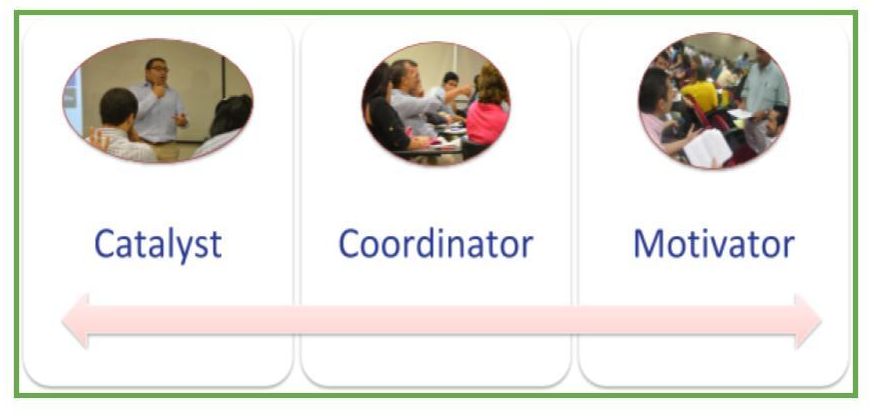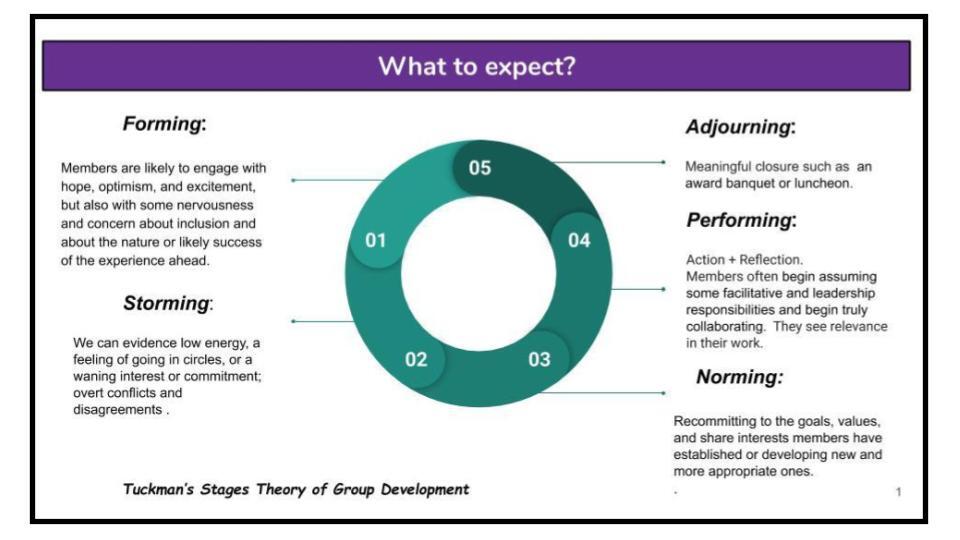Smart Supports for Professional Learning Communities Part 2: The Facilitator as the PLC Backbone
Welcome to the second installment in my blog series, Smart Supports for Professional Learning Communities (PLCs). This piece focuses on the critical role of the facilitator.
As I evolve in my understanding the dynamics of authentic PLCs, I have come to believe that the most essential element to a successful PLC community is having an effective and responsive facilitator or team leader, one who engages participants in quality interactions to foster learning within teaching.
A strong facilitator should be a catalyst, coordinator, and motivator, instead of an expert. Their ultimate goal should be enhancing student engagement and improving student achievement.

Key Facilitator Attributes and Skills:
I have witnessed PLC members experience different challenges. It is my belief that educators who serve as facilitators need a set of attributes and skills to contribute to the development of high-functioning PLCs.
They should have excellent planning and organizational skills, and the ability to work well with others. In order to enhance the leadership capacity and effectiveness of others, facilitators must model a desire and willingness to continually learn and seek ways to first improve themselves so that they can more effectively lead their team. They should be described as innovators in action, educators who constantly reflect upon their practices, take risks, and tinker with new strategies.
Furthermore, their effectiveness in their own teaching merits the recognition and respect of their peers.
Facilitator Responsibilities for Effective PLCs:
- Lead the team in preparing and utilizing team norms.
- Facilitate meetings by planning agendas and guide the team through the steps of protocols and observe how protocols are working. Ask thought-provoking questions that challenge conventional thinking and push the discussion to a deeper level.
- Foster the work of teams in analyzing and improving student learning data.
- Direct the collaborative development and attainment of learning improvement goals.
- Promote and model honesty and respect in discussions.
- Ensure that all voices are heard.
- Maintain team members emotional safety during discussions.
- Keep the team focused and moving forward.
- Mediate disagreements among members.
- Step back when being emotionally drawn into a problematic group dynamic.
- Work closely with the administrators and other instructional leaders aligned to the PLC. Serve as the key communication link between the administration and the PLC team, identifying and communicating professional development needs.
- Elevate, not evaluate work.
What should a facilitator expect from his/her team?
In what is perhaps the most well-known stage-based schema and model, Tuckman (1965; Tuckman & Jensen, 1977) conceptualizes a group’s progression in terms of 5 stages: forming, storming, norming, performing, and adjourning.

At each different but relatively predictable stage, a facilitator’s role and challenges vary (Bens, 2000; Justice & Jamieson, 1999; Kelsey & Plumb, 2004; Komives, Lucas, & McMahon, 1998).
StageActionsFormingThe facilitator’s most important tasks include providing and communicating clear structures and procedures as well as helping members to get acquainted and develop and commit to group norms.StormingMembers may vie subtly or openly for leadership and power, and the facilitator may experience challenges to their leadership. It takes work by the whole group to support risk-taking, learning from mistakes, self-disclosure, and creating a context where criticism and judgment are absent or at least withheld. The facilitator can model a nonjudgmental posture from the outset, welcoming conflict, and avoiding excessive smoothing, to help members not only find common ground but also honestly examine and respect differences.NormingThe facilitator’s task is to assess the nature of the conflict and to listen well to all members, depersonalize challenges, and gently enforce group norms by reminding members of the goals for their common work. The facilitator should model good conflict resolution skills and mirror for the group its own struggles. At this stage, the facilitator may decide to introduce the group members to this model of group development as a way to encourage them to see that they are experiencing a predictable phase. This may support a recommitment to their work and to establishing new norms collaboratively to move the group forward. PerformingThe facilitator may play less of an active role in guiding the group and its work and, instead, help participants recognize progress and successes, assemble copies of finished work, celebrate achievements, and publicize outcomes.AdjourningCelebrate
Although the role of the facilitator is vital for the PLC to achieve its intended outcomes, the commitment and contributions of the members of these communities, as well as the administration, are key to guaranteeing the PLC's success. The facilitator is not alone; it is the responsibility of each of the PLC members to seek out and experiment with best practices and devote team time to discuss effective instructional strategies that include, but are not limited to, re-engagement strategies, enrichment opportunities, equitable learning experiences, and differentiation.
Much of this information was taken and adapted from the book, Facilitating Teacher Teams and Authentic PLCs by Daniel R. Venables, which I strongly recommend for starting or rebooting PLCs in your school. If you would like to dig deeper into PLCs, I invite you to engage in the Supporting Professional Learning Communities Cycle on LINCspring!